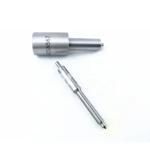Information injection-pump assembly
BOSCH
9 400 610 568
9400610568
ZEXEL
101602-1261
1016021261
MITSUBISHI
ME043033
me043033
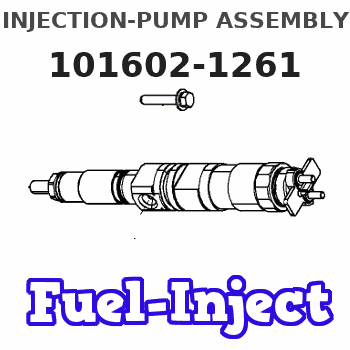
Rating:
Service parts 101602-1261 INJECTION-PUMP ASSEMBLY:
1.
_
5.
AUTOM. ADVANCE MECHANIS
6.
COUPLING PLATE
8.
_
9.
_
11.
Nozzle and Holder
ME070516
12.
Open Pre:MPa(Kqf/cm2)
17.7{180}
15.
NOZZLE SET
Cross reference number
BOSCH
9 400 610 568
9400610568
ZEXEL
101602-1261
1016021261
MITSUBISHI
ME043033
me043033
Zexel num
Bosch num
Firm num
Name
101602-1261
9 400 610 568
ME043033 MITSUBISHI
INJECTION-PUMP ASSEMBLY
6D15T * K 14BE INJECTION PUMP ASSY PE6A PE
6D15T * K 14BE INJECTION PUMP ASSY PE6A PE
Calibration Data:
Adjustment conditions
Test oil
1404 Test oil ISO4113 or {SAEJ967d}
1404 Test oil ISO4113 or {SAEJ967d}
Test oil temperature
degC
40
40
45
Nozzle and nozzle holder
105780-8140
Bosch type code
EF8511/9A
Nozzle
105780-0000
Bosch type code
DN12SD12T
Nozzle holder
105780-2080
Bosch type code
EF8511/9
Opening pressure
MPa
17.2
Opening pressure
kgf/cm2
175
Injection pipe
Outer diameter - inner diameter - length (mm) mm 6-2-600
Outer diameter - inner diameter - length (mm) mm 6-2-600
Overflow valve
131424-5520
Overflow valve opening pressure
kPa
255
221
289
Overflow valve opening pressure
kgf/cm2
2.6
2.25
2.95
Tester oil delivery pressure
kPa
157
157
157
Tester oil delivery pressure
kgf/cm2
1.6
1.6
1.6
Direction of rotation (viewed from drive side)
Left L
Left L
Injection timing adjustment
Direction of rotation (viewed from drive side)
Left L
Left L
Injection order
1-5-3-6-
2-4
Pre-stroke
mm
3
2.95
3.05
Beginning of injection position
Governor side NO.1
Governor side NO.1
Difference between angles 1
Cal 1-5 deg. 60 59.5 60.5
Cal 1-5 deg. 60 59.5 60.5
Difference between angles 2
Cal 1-3 deg. 120 119.5 120.5
Cal 1-3 deg. 120 119.5 120.5
Difference between angles 3
Cal 1-6 deg. 180 179.5 180.5
Cal 1-6 deg. 180 179.5 180.5
Difference between angles 4
Cyl.1-2 deg. 240 239.5 240.5
Cyl.1-2 deg. 240 239.5 240.5
Difference between angles 5
Cal 1-4 deg. 300 299.5 300.5
Cal 1-4 deg. 300 299.5 300.5
Injection quantity adjustment
Adjusting point
A
Rack position
10
Pump speed
r/min
800
800
800
Average injection quantity
mm3/st.
79.1
78.1
80.1
Max. variation between cylinders
%
0
-2.5
2.5
Basic
*
Fixing the lever
*
Injection quantity adjustment_02
Adjusting point
-
Rack position
7.7+-0.5
Pump speed
r/min
350
350
350
Average injection quantity
mm3/st.
8.6
7.1
10.1
Max. variation between cylinders
%
0
-15
15
Fixing the rack
*
Remarks
Adjust only variation between cylinders; adjust governor according to governor specifications.
Adjust only variation between cylinders; adjust governor according to governor specifications.
Test data Ex:
Governor adjustment
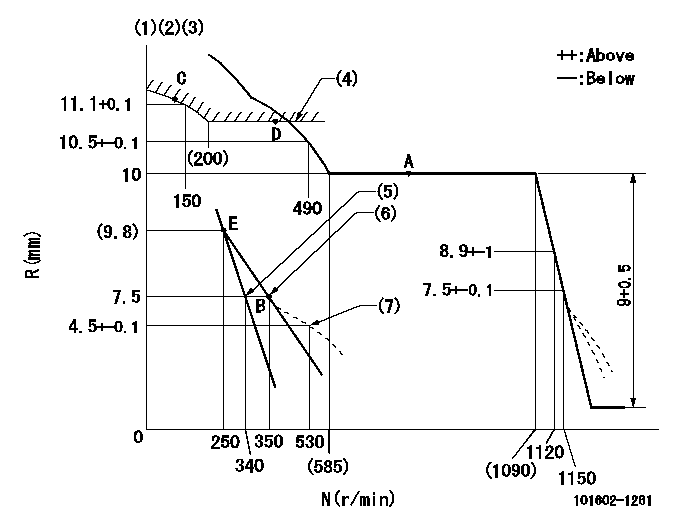
N:Pump speed
R:Rack position (mm)
(1)Lever ratio: RT
(2)Target shim dimension: TH
(3)Tolerance for racks not indicated: +-0.05mm.
(4)Excess fuel setting for starting: SXL (N = N1)
(5)Main spring setting
(6)Set idle sub-spring
(7)Damper spring setting
----------
RT=1 TH=2.8mm SXL=10.8+-0.1mm N1=400r/min
----------
----------
RT=1 TH=2.8mm SXL=10.8+-0.1mm N1=400r/min
----------
Speed control lever angle
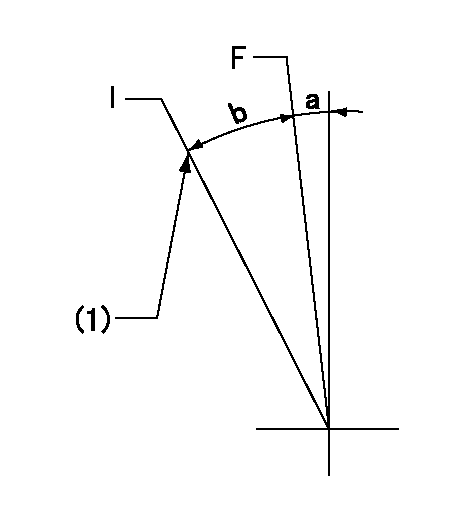
F:Full speed
I:Idle
(1)Stopper bolt setting
----------
----------
a=5deg+-5deg b=9.5deg+-5deg
----------
----------
a=5deg+-5deg b=9.5deg+-5deg
0000000901
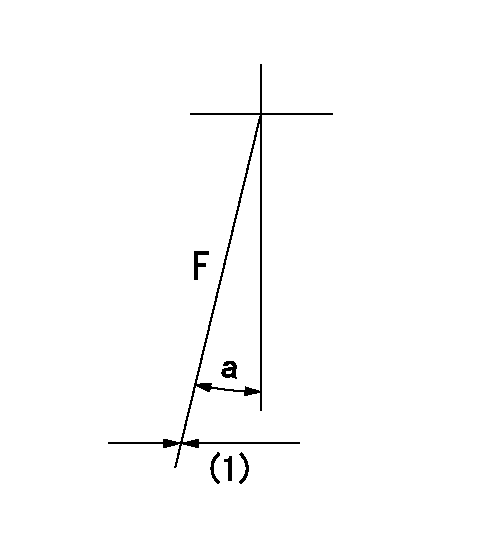
F:Full load
(1)Fix using the stopper bolt.
----------
----------
a=16deg+-5deg
----------
----------
a=16deg+-5deg
Stop lever angle
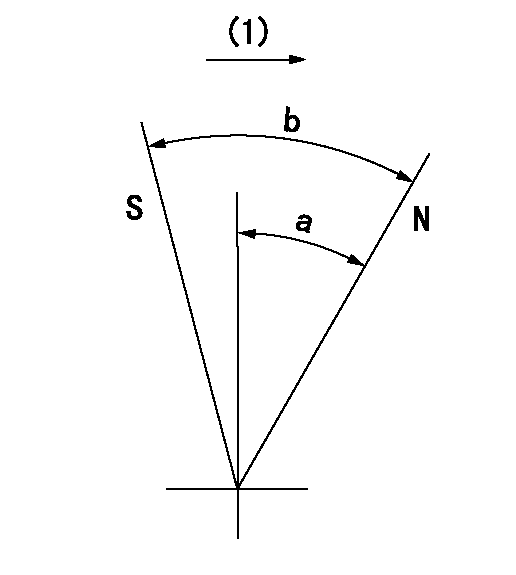
N:Pump normal
S:Stop the pump.
(1)Drive side
----------
----------
a=20deg+-5deg b=70deg+-5deg
----------
----------
a=20deg+-5deg b=70deg+-5deg
Timing setting

(1)Pump vertical direction
(2)Position of coupling's tooth at No 1 cylinder's beginning of injection
(3)B.T.D.C.: aa
(4)-
----------
aa=19deg
----------
a=(2deg)
----------
aa=19deg
----------
a=(2deg)
Information:
Always Allow the Engine to Reach Normal Operating Temperature
Damage to valves and components during operation in very cold temperature conditions can result from engine operation for short intervals. Damage to the engine can occur from starting the engine and stopping the engine many times without allowing the engine to reach normal operating temperature. The fuel and the oil are not completely burned in the combustion chambers while the engine is operating below the normal operating temperature. This fuel and oil causes soft carbon deposits on the valve stems. Generally, these deposits do not cause problems because these deposits are burned off during operation at normal engine temperatures. When the engine is started and the engine is stopped frequently the engine may not reach the normal operating temperature. This will cause the carbon deposits to become thicker. This will prevent the free operation of the valves. This can also cause the following conditions: valves to stick, pushrods to bend and other damage to valve train components. Begin operating the engine at low load. After the engine oil pressure is normal and the coolant temperature begins to rise, the engine may be operated at full load. Allow the engine to reach normal operating temperature. This will keep the carbon deposits on the valve stems at a minimum. This will also maintain free operation of the valves and the valve train components. The engine will remain in better condition and the service life of the engine may be extended when the engine is warmed up properly. Lubrication will be improved, with less acid and sludge in the oil. This will give longer service life for the engine bearings, the piston rings, and other parts. However, limit unnecessary idle time to ten minutes. Engine wear is greatest at low idle and unnecessary idling wastes fuel. Engine Block Heaters
A block heater can improve the startability and a block heater can reduce the warm up time by heating the coolant that surrounds the combustion chambers. An electric block heater can be activated immediately after the engine is stopped. The use of a block heater will reduce the temperature that would require a starting aid. An effective block heater is typically a 1250/1500 W unit. Contact your truck dealer for more information.On/Off Fan Clutch
For better control of the operation of the fan, an ON/OFF fan clutch may be used. ON/OFF fan clutches can help prevent excessive cooling in cold weather. Often, a viscous fan drive will rotate continuously in cold weather. Fan clutches that keep the fan stationary in the OFF position reduce unnecessary movement of air in order to help maintain adequate engine operating temperatures. For some engines, if a viscous fan drive must be specified, select a "slow speed" viscous fan drive that turns the fan at 200 to 250 rpm at engine idle speed. Contact your OEM dealer for more information. Bypass Valves and Insulated Heater Lines
The coolant must be able to bypass the radiator in order
Damage to valves and components during operation in very cold temperature conditions can result from engine operation for short intervals. Damage to the engine can occur from starting the engine and stopping the engine many times without allowing the engine to reach normal operating temperature. The fuel and the oil are not completely burned in the combustion chambers while the engine is operating below the normal operating temperature. This fuel and oil causes soft carbon deposits on the valve stems. Generally, these deposits do not cause problems because these deposits are burned off during operation at normal engine temperatures. When the engine is started and the engine is stopped frequently the engine may not reach the normal operating temperature. This will cause the carbon deposits to become thicker. This will prevent the free operation of the valves. This can also cause the following conditions: valves to stick, pushrods to bend and other damage to valve train components. Begin operating the engine at low load. After the engine oil pressure is normal and the coolant temperature begins to rise, the engine may be operated at full load. Allow the engine to reach normal operating temperature. This will keep the carbon deposits on the valve stems at a minimum. This will also maintain free operation of the valves and the valve train components. The engine will remain in better condition and the service life of the engine may be extended when the engine is warmed up properly. Lubrication will be improved, with less acid and sludge in the oil. This will give longer service life for the engine bearings, the piston rings, and other parts. However, limit unnecessary idle time to ten minutes. Engine wear is greatest at low idle and unnecessary idling wastes fuel. Engine Block Heaters
A block heater can improve the startability and a block heater can reduce the warm up time by heating the coolant that surrounds the combustion chambers. An electric block heater can be activated immediately after the engine is stopped. The use of a block heater will reduce the temperature that would require a starting aid. An effective block heater is typically a 1250/1500 W unit. Contact your truck dealer for more information.On/Off Fan Clutch
For better control of the operation of the fan, an ON/OFF fan clutch may be used. ON/OFF fan clutches can help prevent excessive cooling in cold weather. Often, a viscous fan drive will rotate continuously in cold weather. Fan clutches that keep the fan stationary in the OFF position reduce unnecessary movement of air in order to help maintain adequate engine operating temperatures. For some engines, if a viscous fan drive must be specified, select a "slow speed" viscous fan drive that turns the fan at 200 to 250 rpm at engine idle speed. Contact your OEM dealer for more information. Bypass Valves and Insulated Heater Lines
The coolant must be able to bypass the radiator in order
Have questions with 101602-1261?
Group cross 101602-1261 ZEXEL
Mitsubishi
Mitsubishi
Mitsubishi
Mitsubishi
101602-1261
9 400 610 568
ME043033
INJECTION-PUMP ASSEMBLY
6D15T
6D15T
